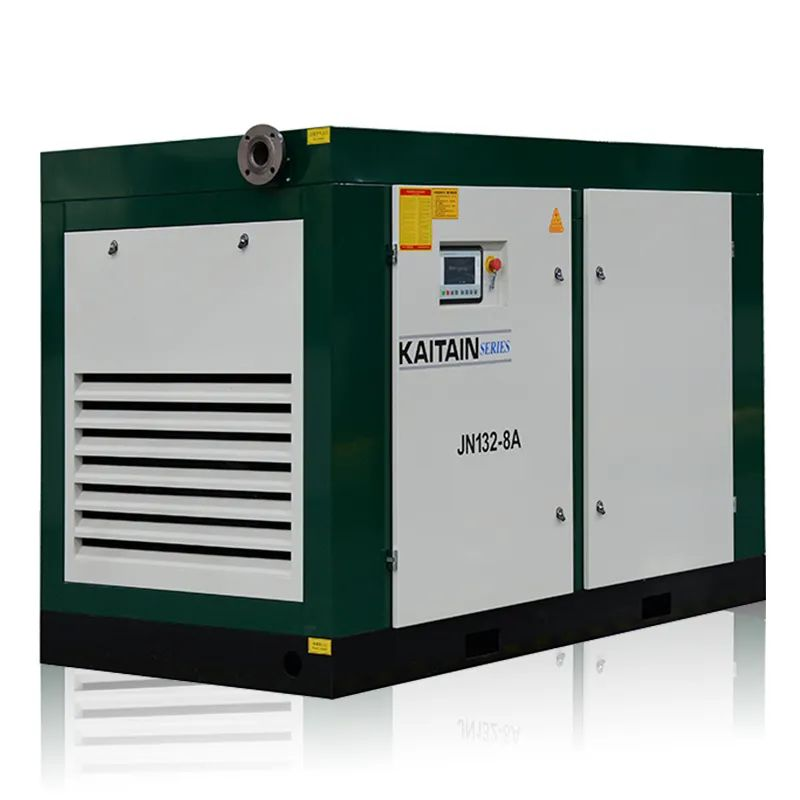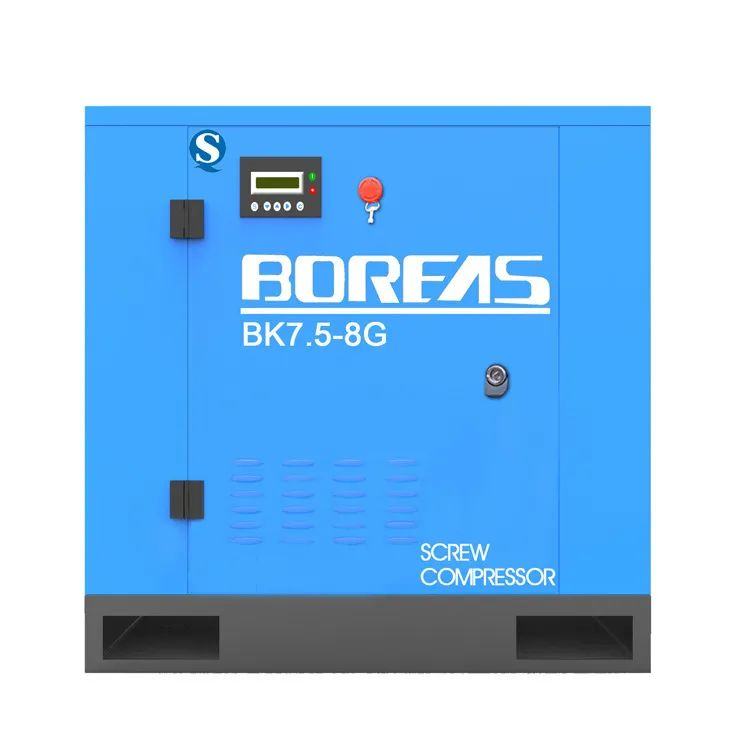

Power frequency and variable frequency
1. The operation mode of the power frequency is: load-unload, upper and lower limit switches control operation;
2. The variable frequency has the characteristics of stepless speed regulation. Through the PID regulator inside the controller or the inverter, it starts smoothly. When the gas consumption fluctuates greatly, it can be adjusted quickly, and there is almost no unloading.
3. The power frequency model adopts direct start or star-delta step-down start, and the starting current is more than 6 times the rated current; the variable frequency model has the function of a soft starter, and the maximum starting current is within 1.2 times the rated current, which has less impact on the power grid and machinery.
4. The exhaust volume of the power frequency driven air compressor is fixed and cannot be changed. The inverter can adjust the motor speed in real time according to the actual gas consumption. When the gas consumption is low, the air compressor can also be automatically dormant, greatly reducing energy loss. The energy saving effect can be further improved through optimized control strategies.
5. The voltage adaptability of the variable frequency model is better. Due to the overmodulation technology adopted by the inverter, it can still output sufficient torque to drive the motor to work when the AC power supply voltage is slightly low. When the voltage is slightly higher, it will not cause the voltage output to the motor to be too high.
When to choose industrial frequency? When to choose variable frequency?
1. When the gas consumption range fluctuates little, the air compressor gas output and gas consumption are close, and it is recommended to use industrial frequency models. If the actual gas consumption fluctuates greatly with the production cycle, you can choose variable frequency models.
2. Of course, in many actual situations, users will choose the combination of industrial frequency + variable frequency configuration. According to the gas usage rules, the industrial frequency model bears the basic load part, and the variable frequency model bears the fluctuating load part.
Oil-free air compressor? Oil-containing air compressor?
1. From the perspective of oil content, oil-containing and oil-free in air compressors generally refer to the amount of oil content in the exhaust body of the air compressor exhaust port. There is also a completely oil-free air compressor. It is not lubricated with oil, but lubricated with resin materials, so the final discharged gas does not contain oil and is called a completely oil-free air compressor.
2. From the working principle, there are obvious differences between the two.
3. Oil-free air compressors do not involve oil during operation. Whether it is an oil-free piston machine or an oil-free screw machine, they will generate a lot of high temperature during operation. If there is oil in the air compressor, the oil will take away the high temperature generated during the compression process of the air compressor, thereby cooling the machine.
4. Oil-free air compressors are cleaner and more environmentally friendly to a certain extent than oil-containing air compressors. Therefore, institutions such as hospitals, laboratories, and schools are very suitable for the use of oil-free air compressors.
Post time: Jun-21-2024









